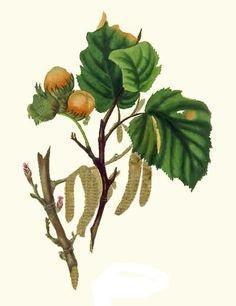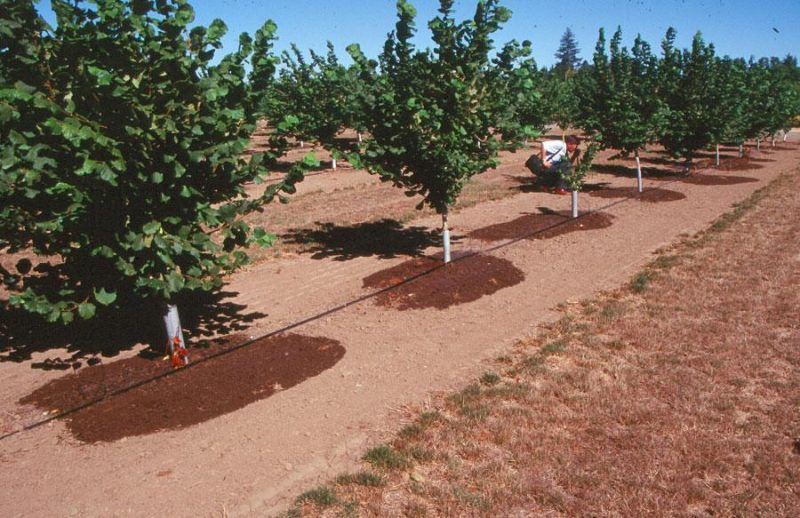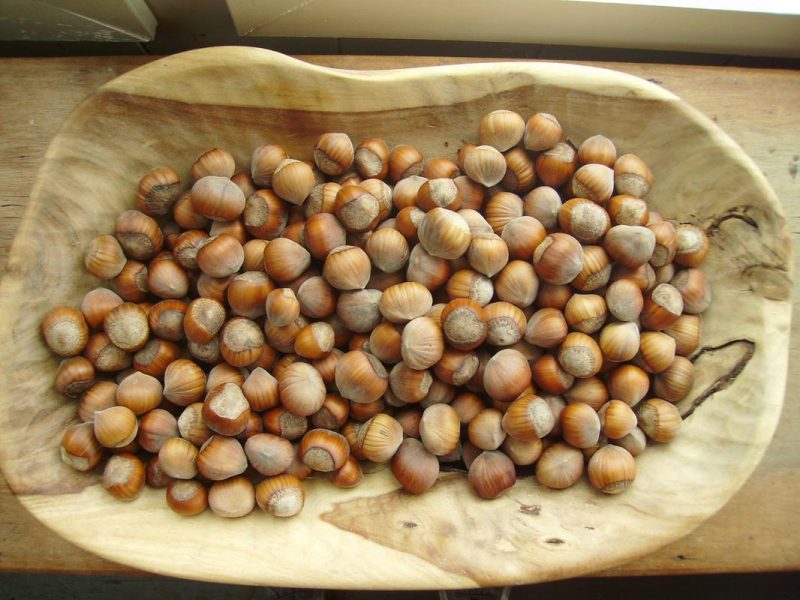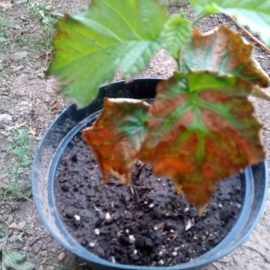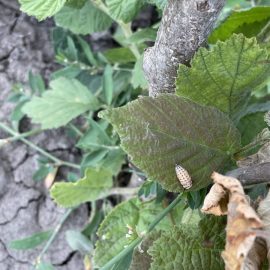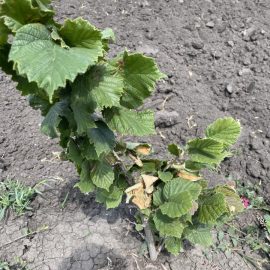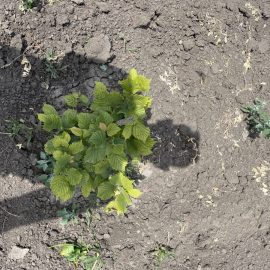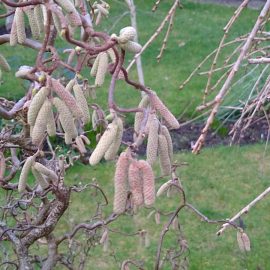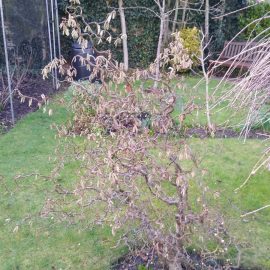Hazel, planting, growing and harvesting
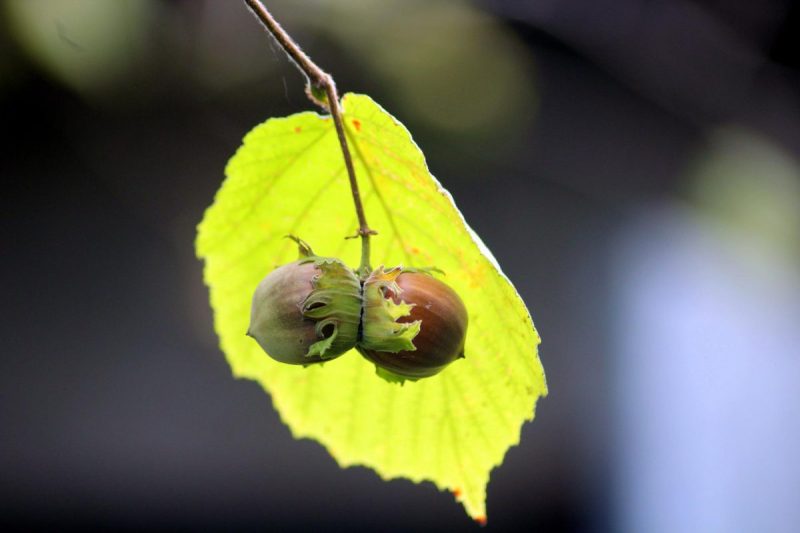
The common hazel or European hazel (Corylus avellana) is a fruit-bearing shrub that grows spontaneously at the edge of deciduous forests, being spread especially in the hills. Hazelnuts (the fruits) are an important source of vitamins, minerals, and fat. Consumption should be moderate, given their high caloric intake.
Botanical characteristics
The root system is well developed laterally. In the first years after planting, the roots grow slowly and do not penetrate deep into the soil. The roots of hazel can form symbiotic associations with mycorrhizal fungi, thus favoring the absorption of water and minerals. The hazel can reach 3-5 m in height, it has a globular and thick crown, with 15-20 branches, starting from the crown area.
It is a unisexual monoecious plant that forms male and female inflorescences on the same plant. The male flowers are grouped into inflorescences called catkins, each catkin containing between 130 and 160 flowers. The female flowers are located towards the top of the branches and they are also clustered (each inflorescence contains 6-8 flowers). The fruit is a monocarpic achene with an edible seed, called hazelnut.
Environmental requirements
The hazel has low-temperature requirements, being quite resistant to frost. In the dormancy period phase, it resists temperatures up to -30 ℃. Still, the flowers can be affected by lower temperatures than -5 ℃, especially considering that the hazel blooms between January and March. Frost resistance decreases with bud swelling, which can be affected by temperatures of -10 ℃.
The shrub has high light demands and the fruit production is directly influenced by the planting distances, the exposure, and the crown formation. Fruiting is poor in the shaded parts of the crown. The hazel grows well in areas with 700-1000 mm/year of rainfall. If the water requirement is not provided by rainfall, irrigation is necessary. The shrub makes good use of fertile, alluvial, or medium-fertile soils. It does not tolerate water stagnation in the soil, which causes root asphyxiation. Also, the active limestone content should not be higher than 10-12%.
Soil preparation
For hazelnut cultivation, choose flat or sloping land that is well exposed to direct sunlight. The hazel bush grows in all geographical areas, but the best results are obtained in the hilly areas. Hazel pollination is anemophilous, therefore the rows should be placed in the direction of the predominant wind. The shrub is not exigent to the preceding crop. If the land has been occupied by fruit-bearing species, it is recommended to let the soil rest for 3-4 years. During this time, you can grow perennial leguminous species or grasses.
The land preparation operation starts by removing all plants and plant debris from the plot. If the field is heavily infested with weeds, you can apply non-selective herbicides. If necessary, level the soil, taking into account the land slope.
Recommended products
-
You can find products on a different store
Change Store -
You can find products on a different store
Change Store -
You can find products on a different store
Change Store -
You can find products on a different store
Change Store -
You can find products on a different store
Change Store -
You can find products on a different store
Change Store -
You can find products on a different store
Change Store -
You can find products on a different store
Change Store -
You can find products on a different store
Change Store -
You can find products on a different store
Change Store -
You can find products on a different store
Change Store -
You can find products on a different store
Change Store -
You can find products on a different store
Change Store -
You can find products on a different store
Change Store -
You can find products on a different store
Change Store -
You can find products on a different store
Change Store -
You can find products on a different store
Change Store -
You can find products on a different store
Change Store -
You can find products on a different store
Change Store -
You can find products on a different store
Change Store -
You can find products on a different store
Change Store -
You can find products on a different store
Change Store -
You can find products on a different store
Change Store -
You can find products on a different store
Change Store
It is recommended to scarify the soil to a depth of 60 cm, in order to loosen the deep layers of soil, immediately after clearing the land. If scarification is not possible, carry out deep plowing at 30-35 cm, followed by tilling with a disc.
Basic fertilization should start with NPK complex fertilizer, depending on the soil supply condition, determined by soil analysis. Organic fertilizers can be applied at planting.
Planting
The optimal planting period is autumn, the rest period being favorable for rooting. Hazel roots tend to dehydrate easily, so if the planting material is transported over a long distance, the roots must be protected to maintain turgidity. Before planting, the roots should be rehydrated in a pot of water. To encourage the shrubs to grip, place their roots into a slurry of yellow soil, cattle manure, and water, with the consistency of cream.
2-3 days before planting, stake the ground, then make planting holes (60 x 60 x 60 cm), using 6 m between rows and 3-4 m between plants per row. It is recommended to plant 2-3 varieties in the plot for pollination.
After planting, the soil around the shrub is mowed for better contact between the soil and the roots. Then irrigate each shrub with 10-15 l of water. Repeat irrigation 5-6 times in the first year after planting. To avoid rodent damage, cover the stems with protective material for this purpose.
Maintenance work
One of the most important maintenance works is the pruning. In the early years, pruning is carried out to form a stem about 80 cm high. Pruning should happen during the dormant period. The hazel tree forms root suckers at the base of the trunk. These root suckers must be removed so that the plant doesn’t have to use resources for their growth and development.
Once the hazel has reached its maximum production capacity (after 6 years from planting), pruning should aim to normalize the fruit load or (if necessary) stimulate fruiting. As the plants grow and develop, the annual growth rate reduces and the shrub forms small hazelnuts. For this reason, from year 8 onwards, you can prune the fruiting branches. These prunings should only be carried out on one-third of the plants each year, as production is affected, and it is recommended to extend the pruning over several years. Wounds larger than 4-5 cm should be covered with tree wound dressing.
Recommended products
-
You can find products on a different store
Change Store -
You can find products on a different store
Change Store -
You can find products on a different store
Change Store -
You can find products on a different store
Change Store -
You can find products on a different store
Change Store -
You can find products on a different store
Change Store -
You can find products on a different store
Change Store -
You can find products on a different store
Change Store -
You can find products on a different store
Change Store -
You can find products on a different store
Change Store -
You can find products on a different store
Change Store -
You can find products on a different store
Change Store -
You can find products on a different store
Change Store -
You can find products on a different store
Change Store -
You can find products on a different store
Change Store -
You can find products on a different store
Change Store -
You can find products on a different store
Change Store -
You can find products on a different store
Change Store -
You can find products on a different store
Change Store -
You can find products on a different store
Change Store -
You can find products on a different store
Change Store -
You can find products on a different store
Change Store -
You can find products on a different store
Change Store -
You can find products on a different store
Change Store
You can till the interval between rows to a depth of 10-12 cm or you can apply selective herbicides. You can also grow perennial grasses, which are periodically mowed and used as mulch. The mulch layer maintains a good phytosanitary condition, prevents the development of weeds, maintains soil moisture, and reduces the number of maintenance works.
Irrigation
The hazel’s root system does not extend deep into the soil, with most roots being found at a depth of 50-60 cm. Because of this, hazel can be affected by drought. Irrigation is mandatory in areas where there is not at least 700 mm of rainfall per year. Irrigation should be carried out as needed, using drip irrigation.
Fertilization
Organic fertilization is of great importance in hazelnut cultivation because its roots form mycorrhizae, a symbiosis that is favored in soils rich in organic matter, with a high level of water. Manure can be added every 3 years. Chemical fertilization should be carried out annually, depending on soil fertility and plant requirements. Phosphorus and potassium can be applied in autumn and incorporated into the soil, and nitrogen in early spring. For young hazelnut plantations, apply fertilizers locally along the rows.
Water-soluble fertilizers can only be administered by drip irrigation systems, localized.
Apply fertilizers foliar, depending on the plant’s needs and environmental conditions.
To help plants overcome periods of stress, you can carry out foliar and root fertilization with specific fertilizers. Soil activators can be applied to improve soil structure and root uptake.
Recommended products
-
You can find products on a different store
Change Store -
You can find products on a different store
Change Store -
You can find products on a different store
Change Store -
You can find products on a different store
Change Store -
You can find products on a different store
Change Store -
You can find products on a different store
Change Store -
You can find products on a different store
Change Store -
You can find products on a different store
Change Store -
You can find products on a different store
Change Store -
You can find products on a different store
Change Store -
You can find products on a different store
Change Store -
You can find products on a different store
Change Store -
You can find products on a different store
Change Store -
You can find products on a different store
Change Store -
You can find products on a different store
Change Store -
You can find products on a different store
Change Store -
You can find products on a different store
Change Store -
You can find products on a different store
Change Store -
You can find products on a different store
Change Store -
You can find products on a different store
Change Store -
You can find products on a different store
Change Store -
You can find products on a different store
Change Store -
You can find products on a different store
Change Store -
You can find products on a different store
Change Store
The hazelnuts’ health is very important for high yields. That is why it is important to pay more attention to early detection of disease or pest infestations. Even though in their natural habitat, hazelnut trees are rarely affected, in orchards some diseases can be encountered. For example: hazelnut blight, fruit blossom blight, powdery mildew, anthracnose, or others. Among the pests, we mention aphids, nut weevils, mites, and others.
To reduce disease and pest incidence, it is best to collect and burn plant debris and fallen leaves in autumn. These can be composted which is a good method of recycling organic waste. Entering dormancy is an opportunity to carry out important treatments for disease and pest control.
Hazelnut harvesting
Harvesting is done when the fruit has reached full maturity, which is indicated by the chocolate-red color of the fruit. In addition, the layer between the peel and the seed must be dry, the core must be sweet and the fruit must be easily detached from its shell. Harvesting can be done by shaking the bush and collecting the fruit or by hand picking. If the hazelnuts have been harvested with their shell, the shell should be removed immediately after harvesting. To be stored in optimal conditions, the fruit should be dried for 4-6 days, laid out in thin layers. If the hazelnuts have been properly dried, they can be stored for 1 year in well-ventilated rooms.














































































































































































































































































































































































































































